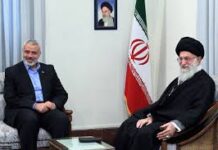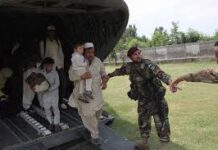Context

Of these assurances, the most important regards Kashmir and the security of Pakistan’s eastern border, without which Pakistan is virtually unable to focus on the troublemakers on its western border, particularly in a post-Mumbai scenario.
Analysis
Furthermore, Mumbai attacks negatively impacted the composite dialog process between Pakistan and India. True, the meetings between the Prime Ministers of both countries at the Non- Aligned Movement Summit in Sharm Ul-Shiek resort in Egypt had mixed results, but they were successful in restoring the composite dialog process. This would have been impossible without surreptitious US pressure on India.
What follows is the possible sequence of events leading to the new resolve displayed by Pakistan. The first step was an understanding on the part of NATO and the US that without addressing Pakistan’s security concerns, it was pointless to ask the country to act meaningfully against terrorism. Something simply had to be done regarding Kashmir. At first, the need to appoint an envoy whose portfolio would also include Kashmir was just too much for India to swallow. So NATO and the US turned to behind-the-scenes diplomacy, for example, reaffirming India’s regional and global status through the recent visit Secretary of State Hillary Clinton, while at the same time pressuring the country to enter a dialog on Kashmir with Pakistan. For the United States, propping up India is also important vis-a-vis China and increasingly, Iran. The latter has traditionally maintained a good relationship with India, which, however, is souring, largely due to improving ties with the United States.
The second step was to signal to Pakistan that the US-India partnership is a good thing for Pakistan, not a threat. The United States showed that it meant business when it provided billions in aid to Pakistan, on the condition that Pakistan exhibit determination in its fight against extremism. Moreover, Pakistan was provided with a summit level meeting with the European Union (EU), but has received no Trade Access to EU markets yet. Pakistan also obtained a multi-billion aid package at a “Friends of Pakistan” meeting in Japan earlier this year that would never have materialized without active US support.
These positive developments assured Pakistan that the world powers were ready to listen to its side of the story: that it cannot focus on its western border without international help on the diplomatic and political front regarding Kashmir.
Another good sign were provisions in the new AfPak policy, in which the US displayed a willingness to negotiate with the so-called “good Taliban,” meaning those willing to break with the Al-Qaeda. Before this can happen, however, NATO and US want to weaken the Taliban as to deprive it of a position of strength in future peace talks. At this time the Afghan Taliban is standing firm, as is NATO and the US, making this a pivotal phase of the war in Afghanistan.
These were the factors that played a part in convincing Pakistan to go all out in the war against the Pakistani Taliban. In so doing, the army was able to reverse the negative domestic and western perceptions regarding both its intent and its capacity to counter the spreading menace of Taliban extremism. On the other hand, effective action against the Kashmiri Jihadis and the Taliban involved in Afghanistan is a more complicated question, involving different dynamics.
Meanwhile, Pakistan is also proving to be a laboratory where different tactics and strategies can be tested out. The lessons learned can then be utilized by NATO and United States in the Afghan theater of war. An example is the Helmand Operation (Khanjar), where the approach used appears similar to that of the Swat Operation.
One can see that each international actor is testing multiple strategies, some perhaps contradictory, as part of an effort to check and counter the moves of the other actors prior to eventual peace talks.
Tell Us What You Think



